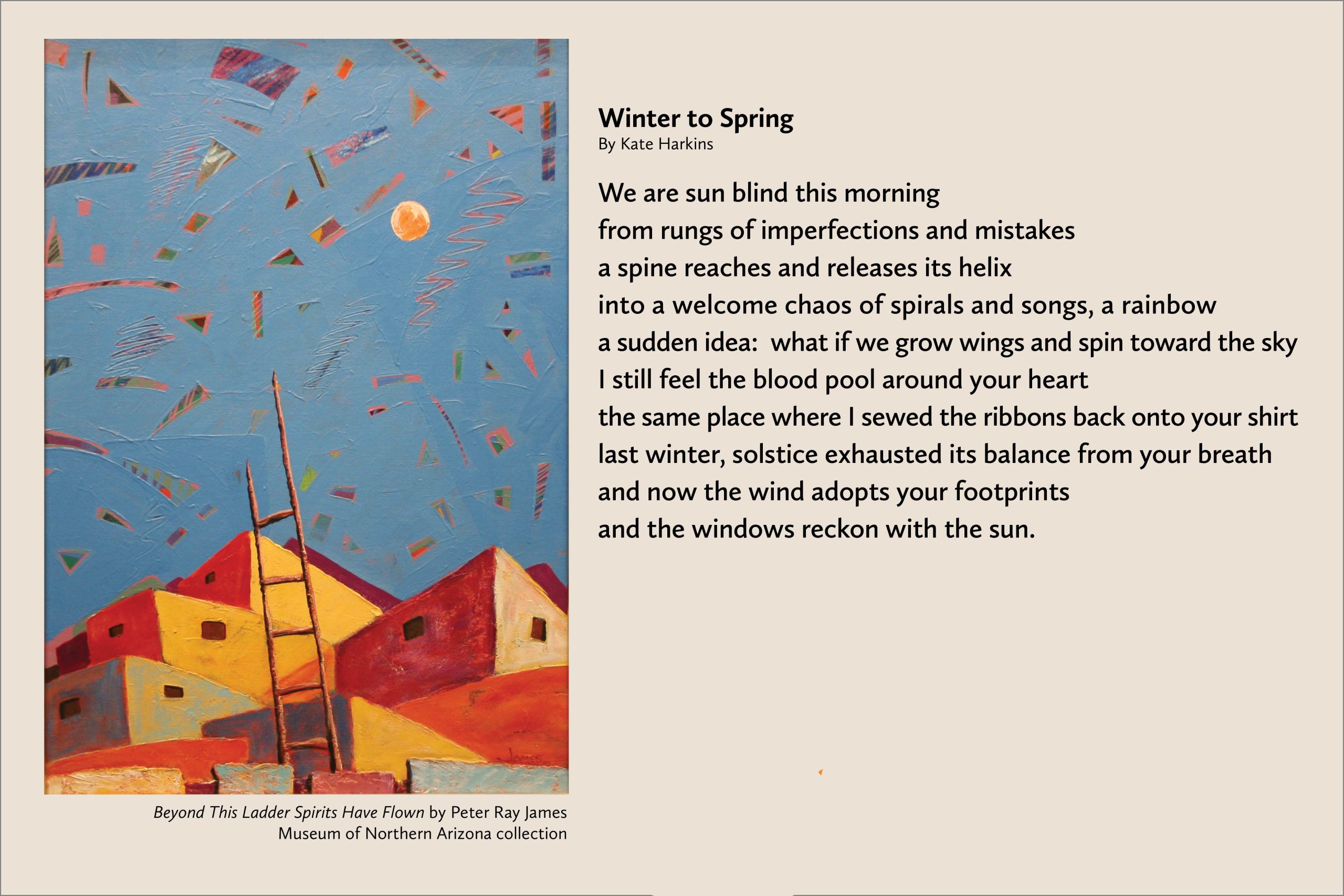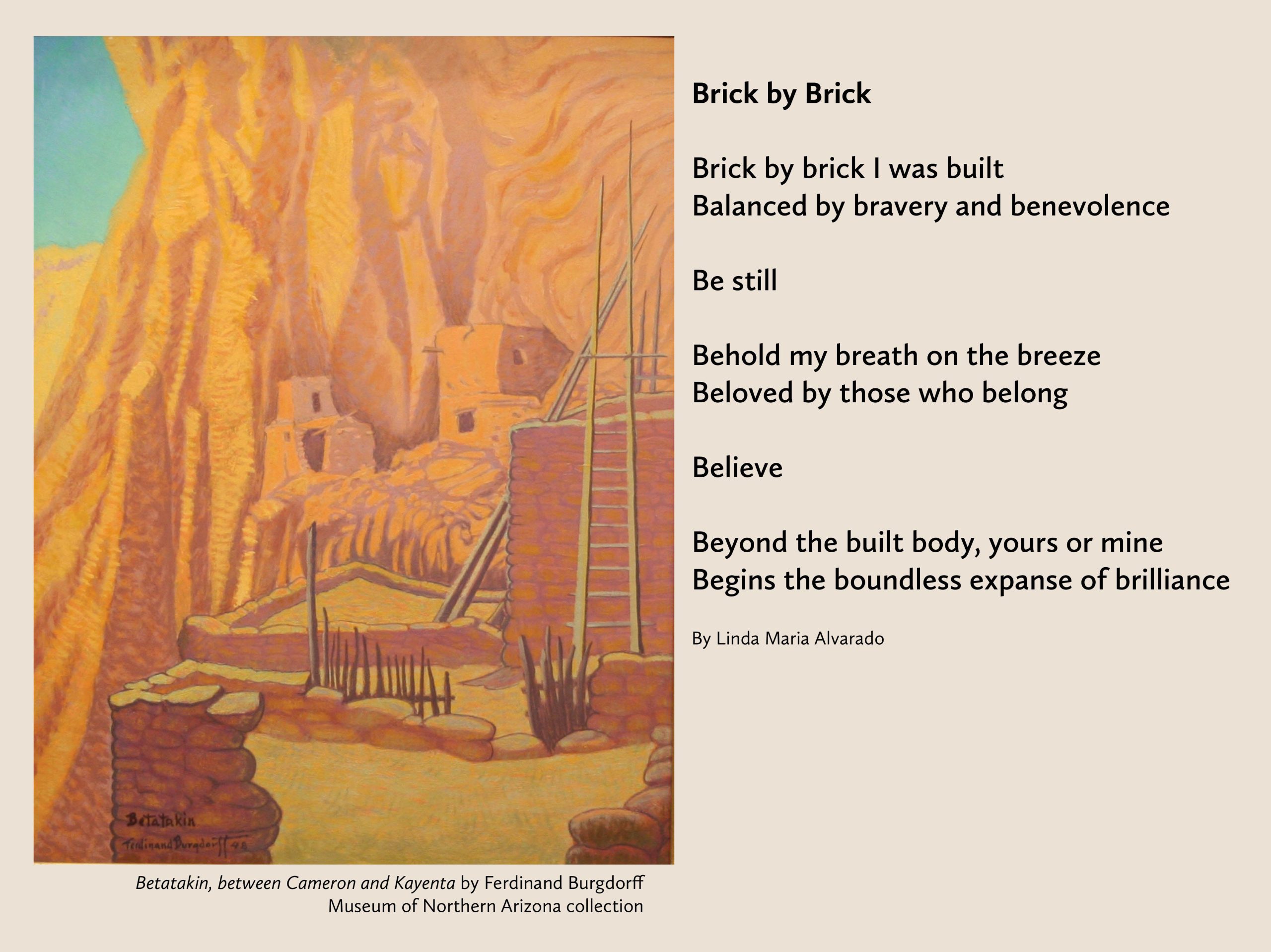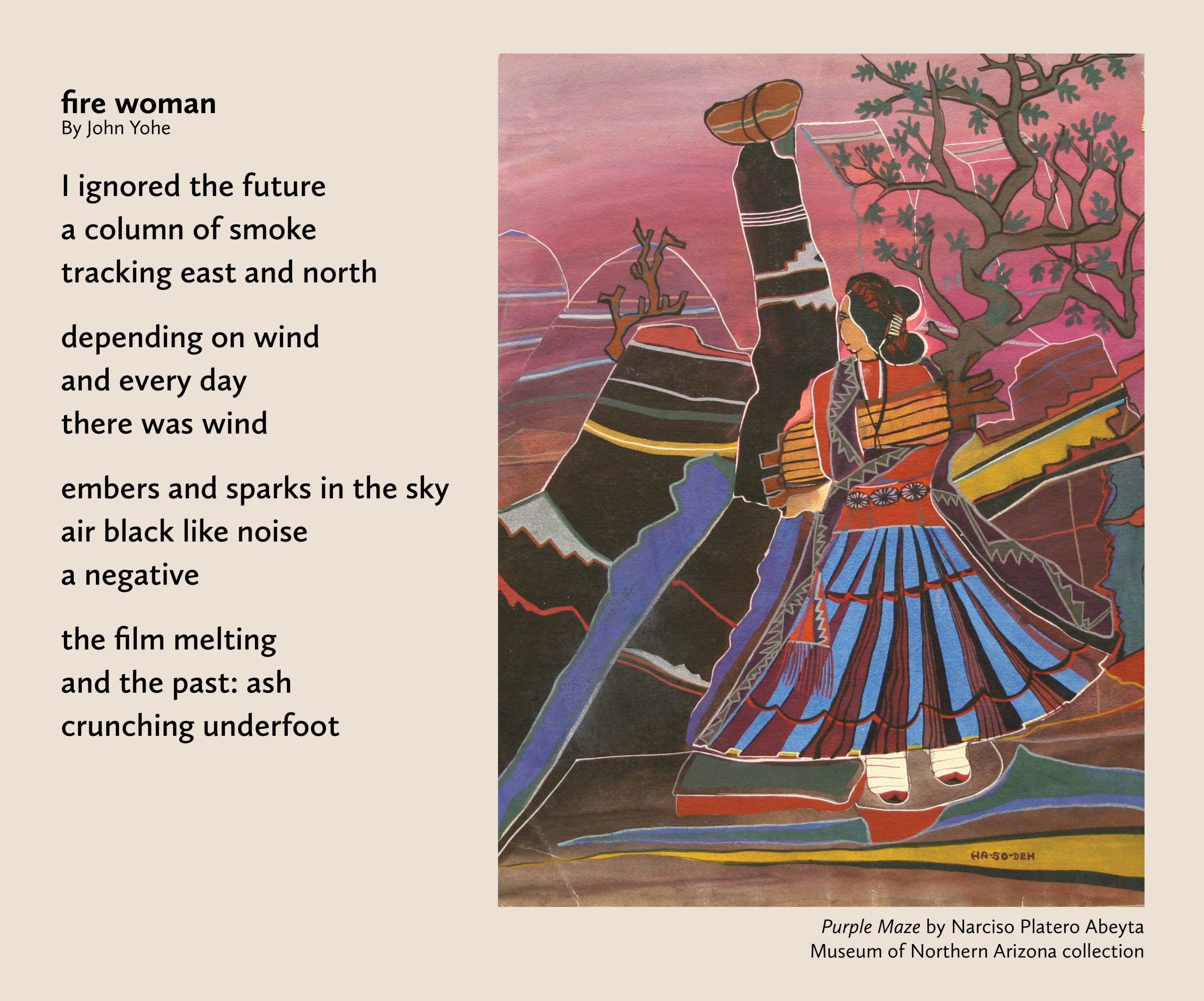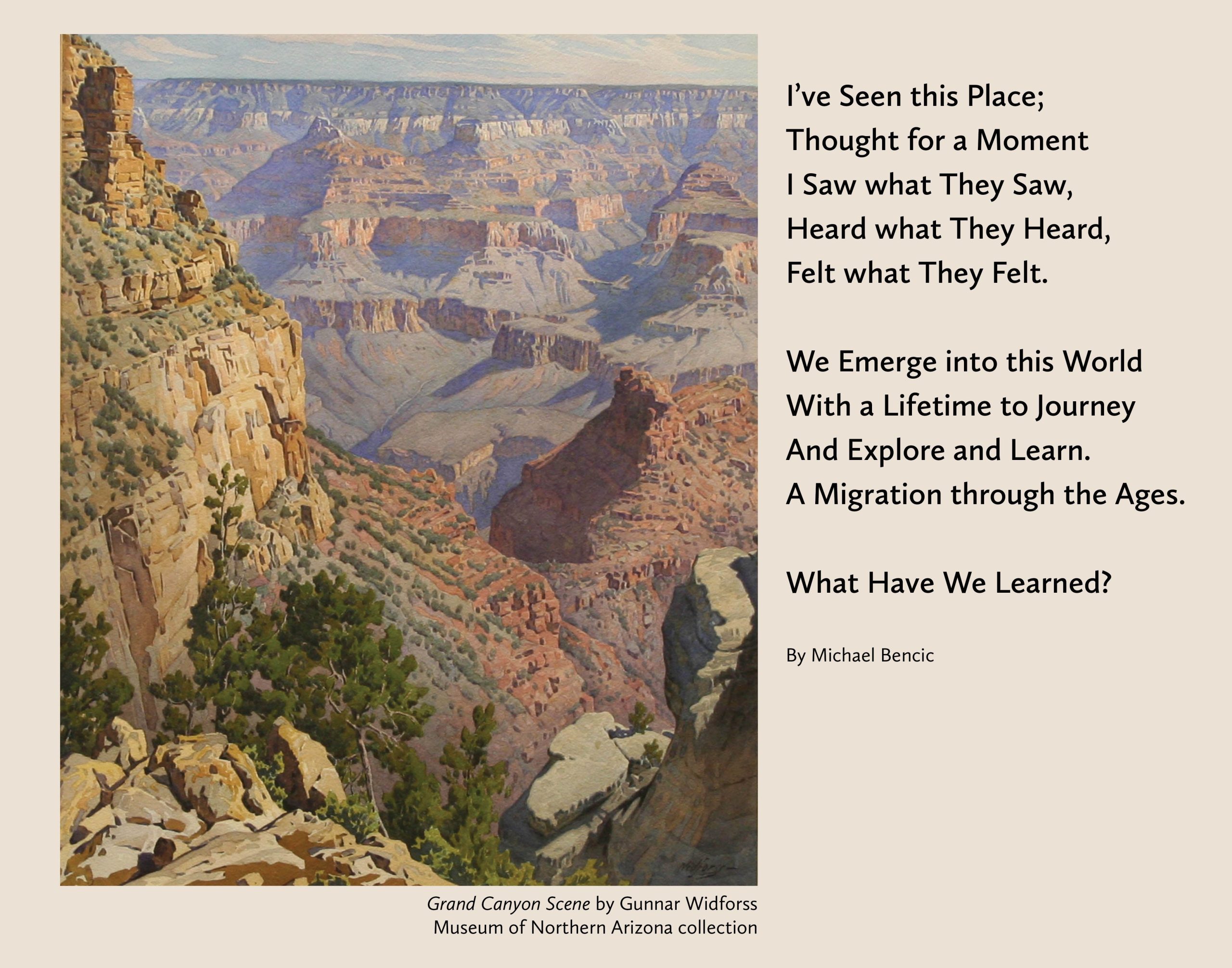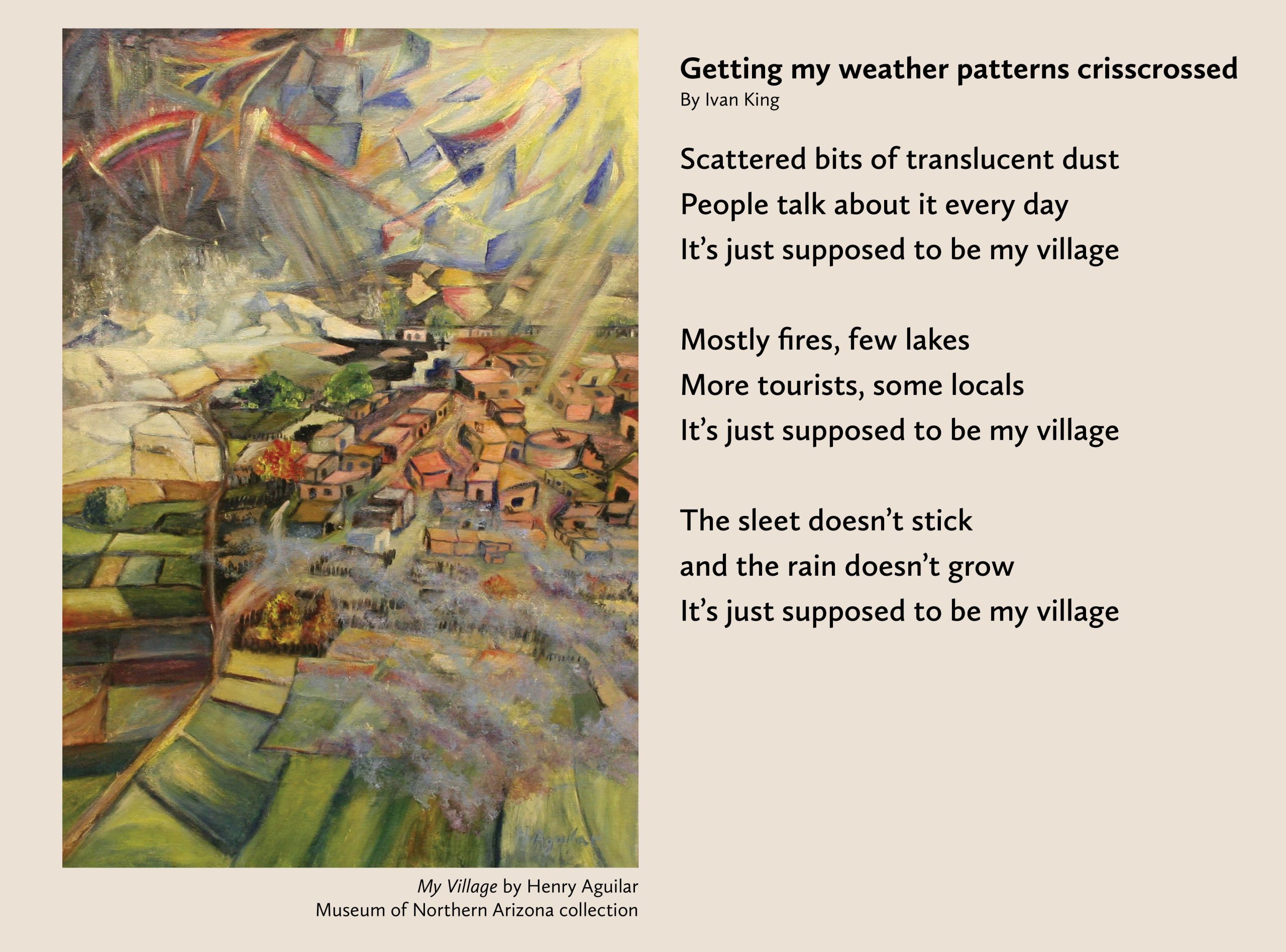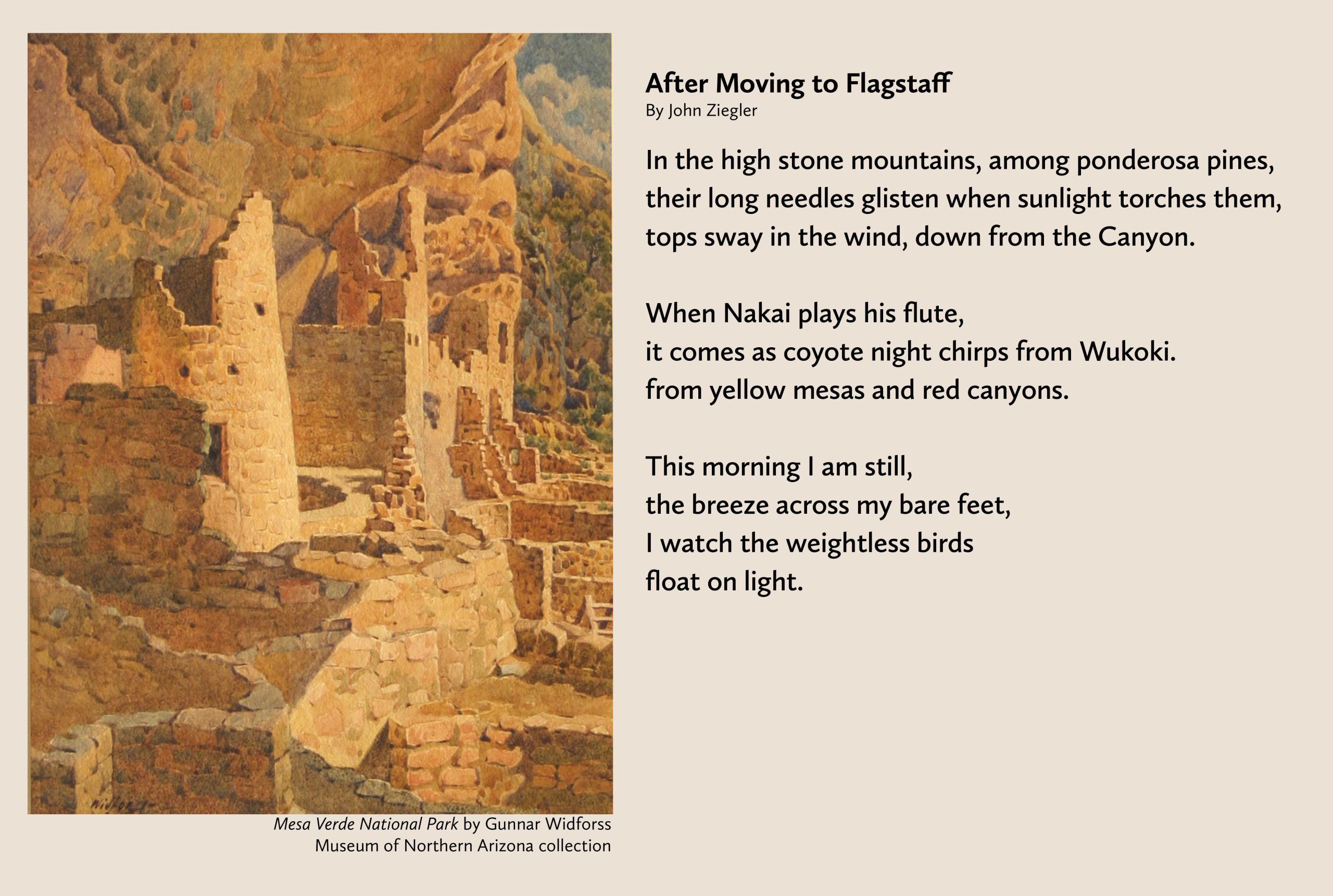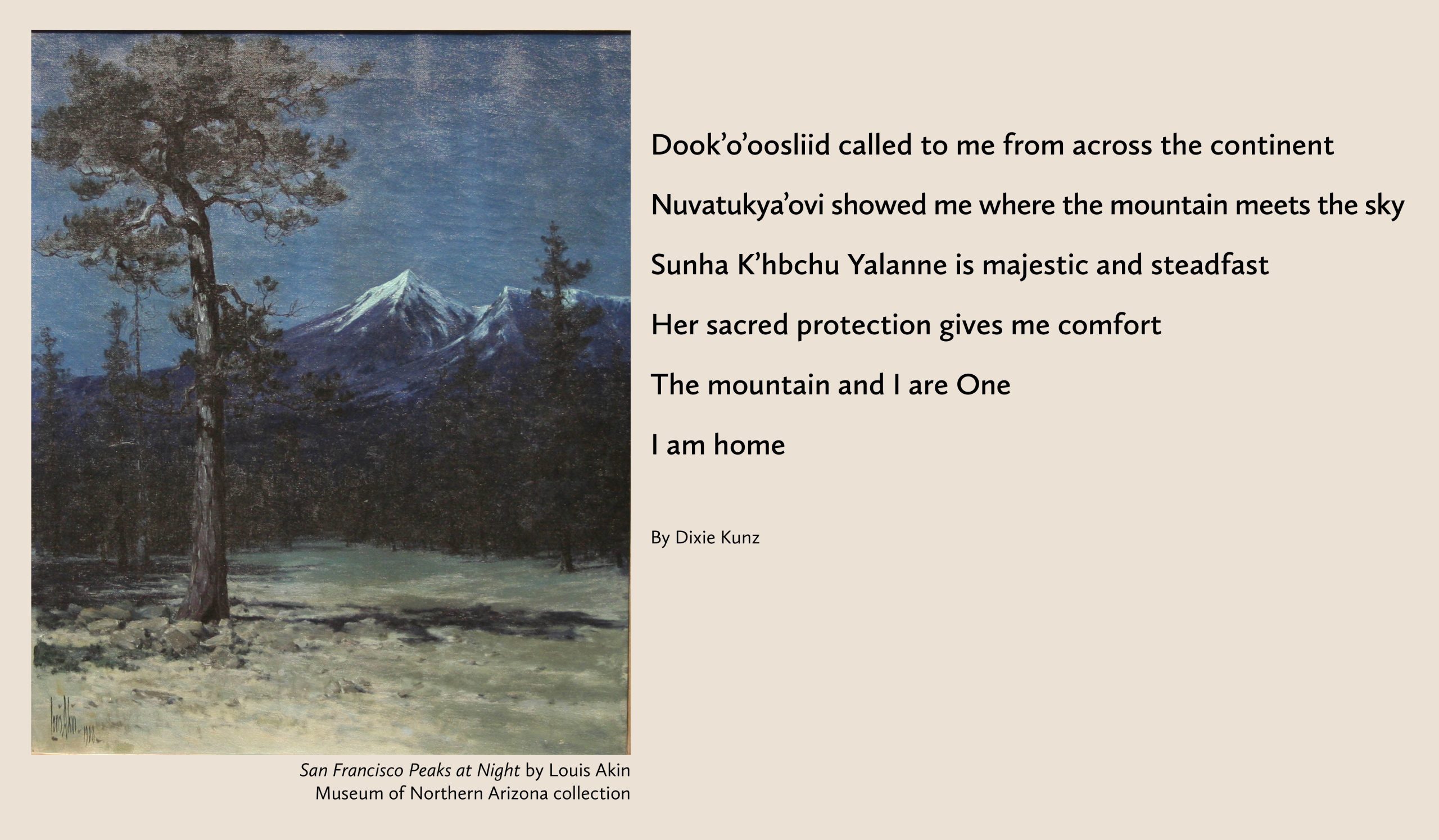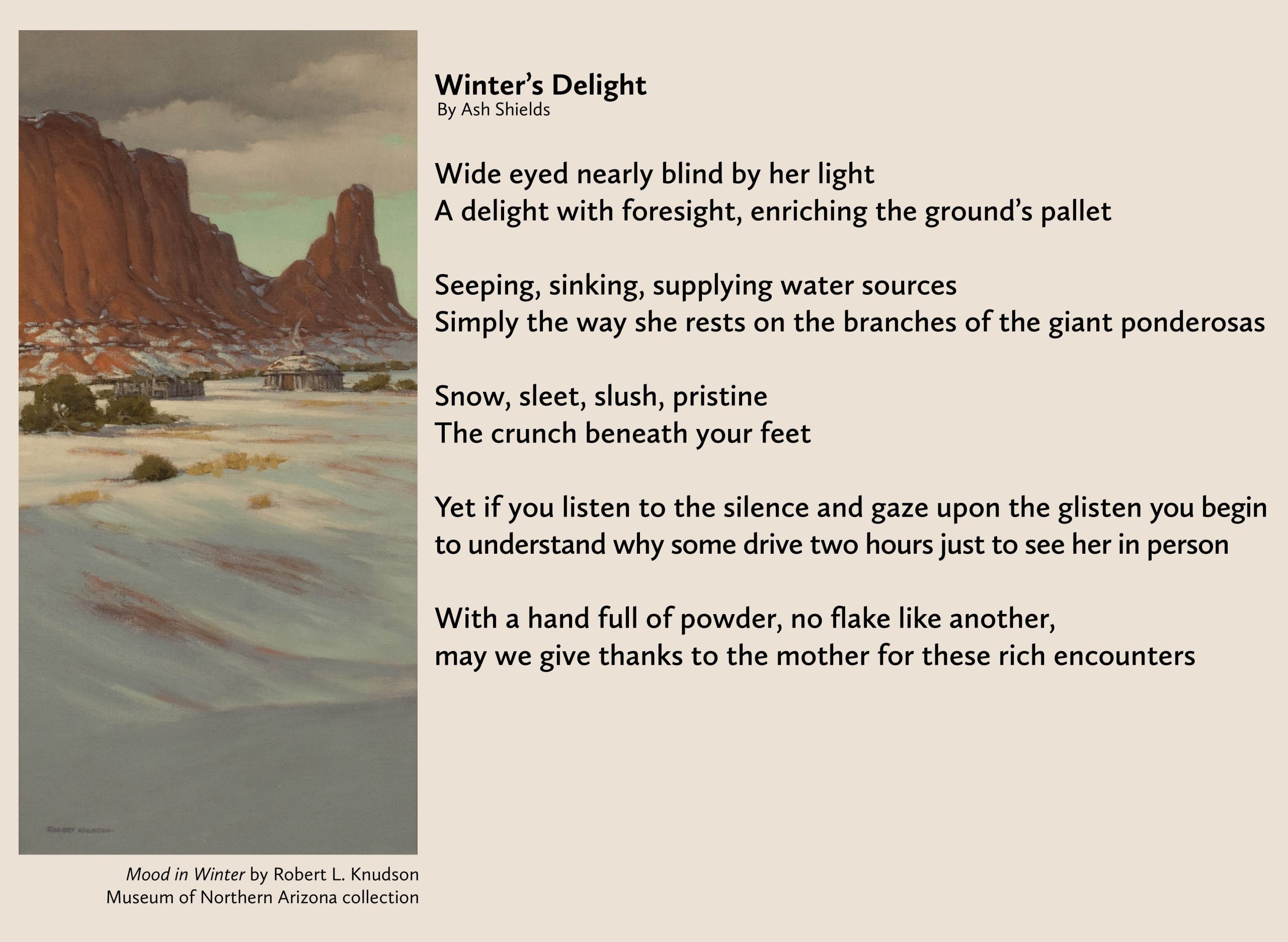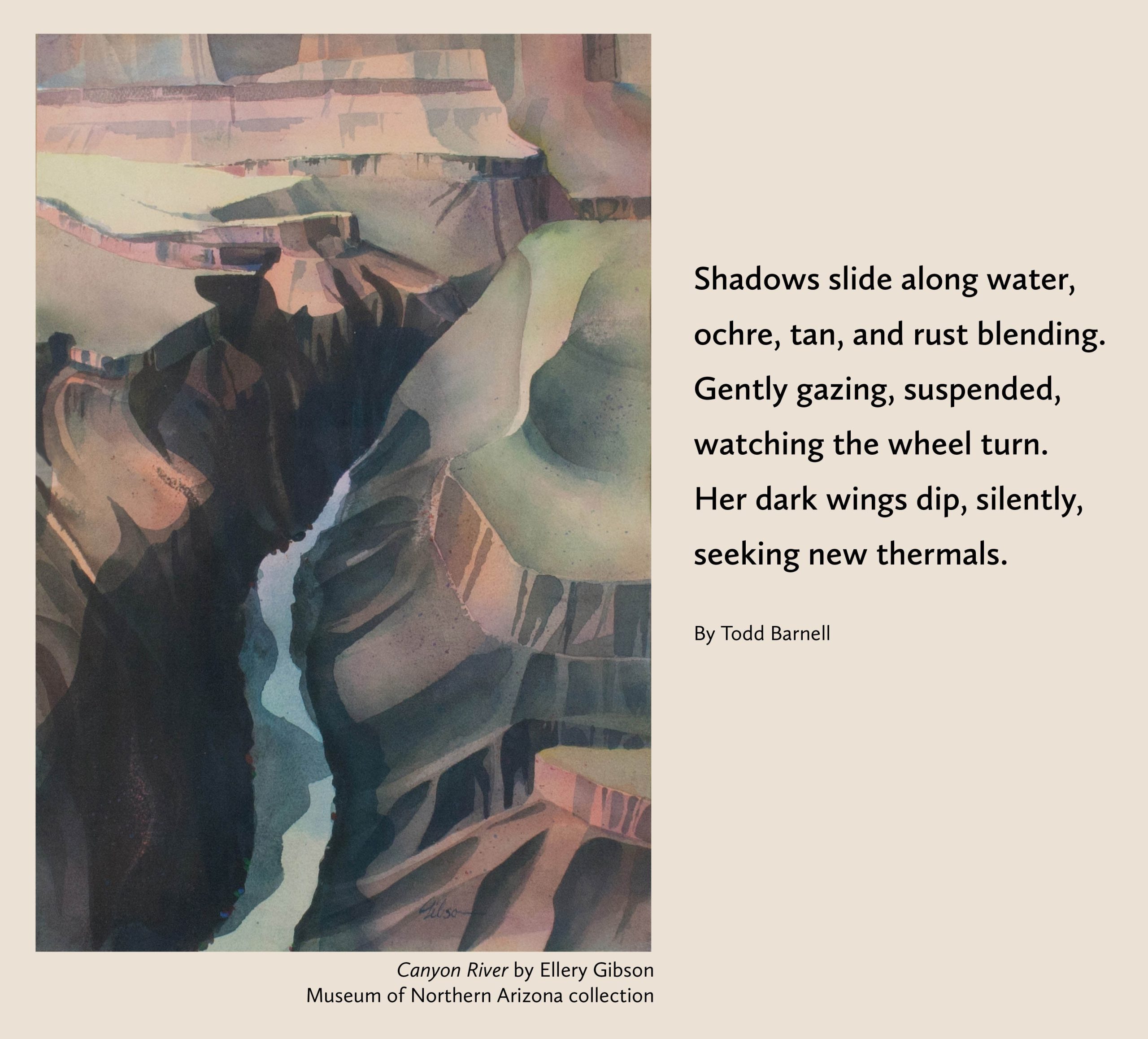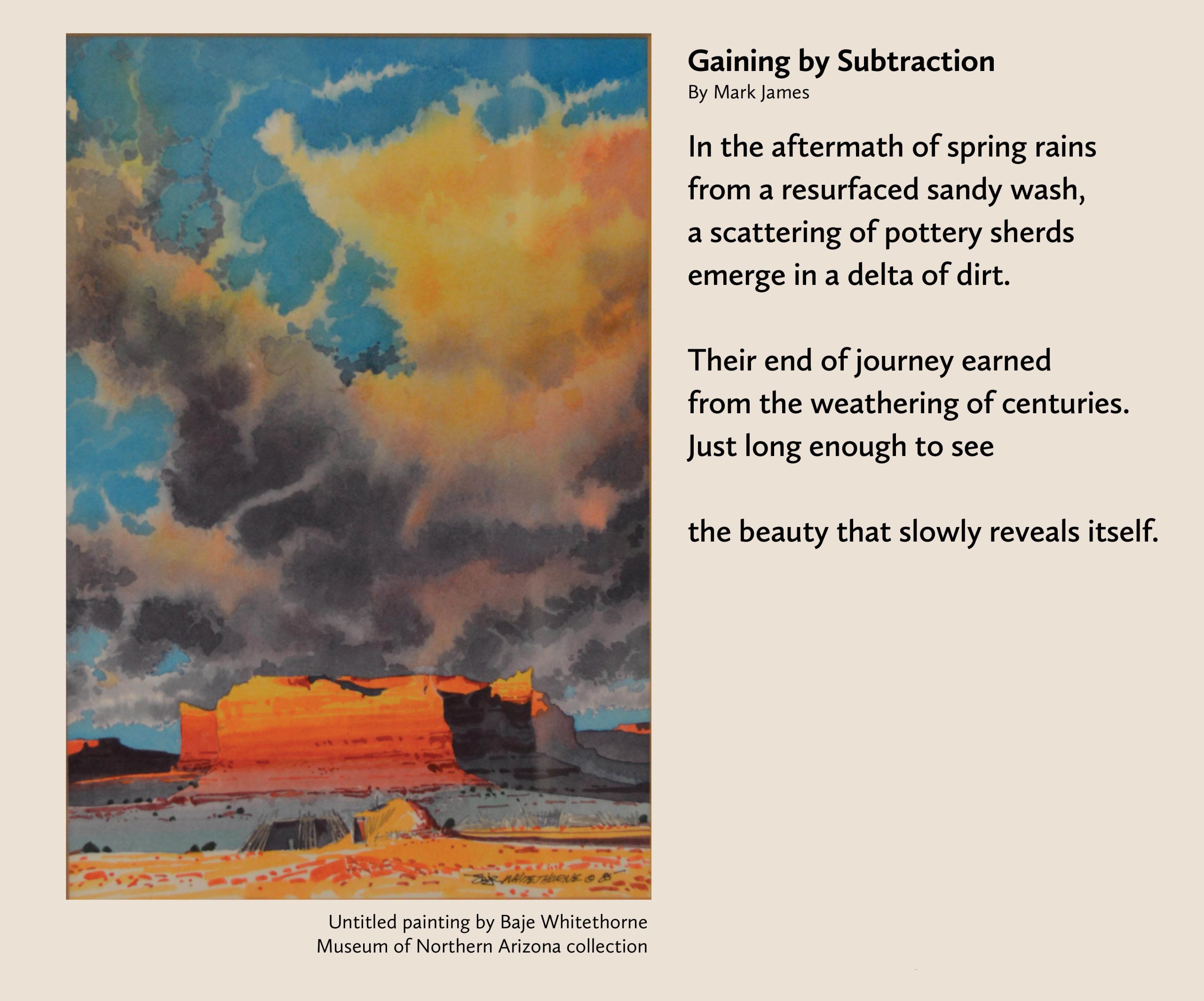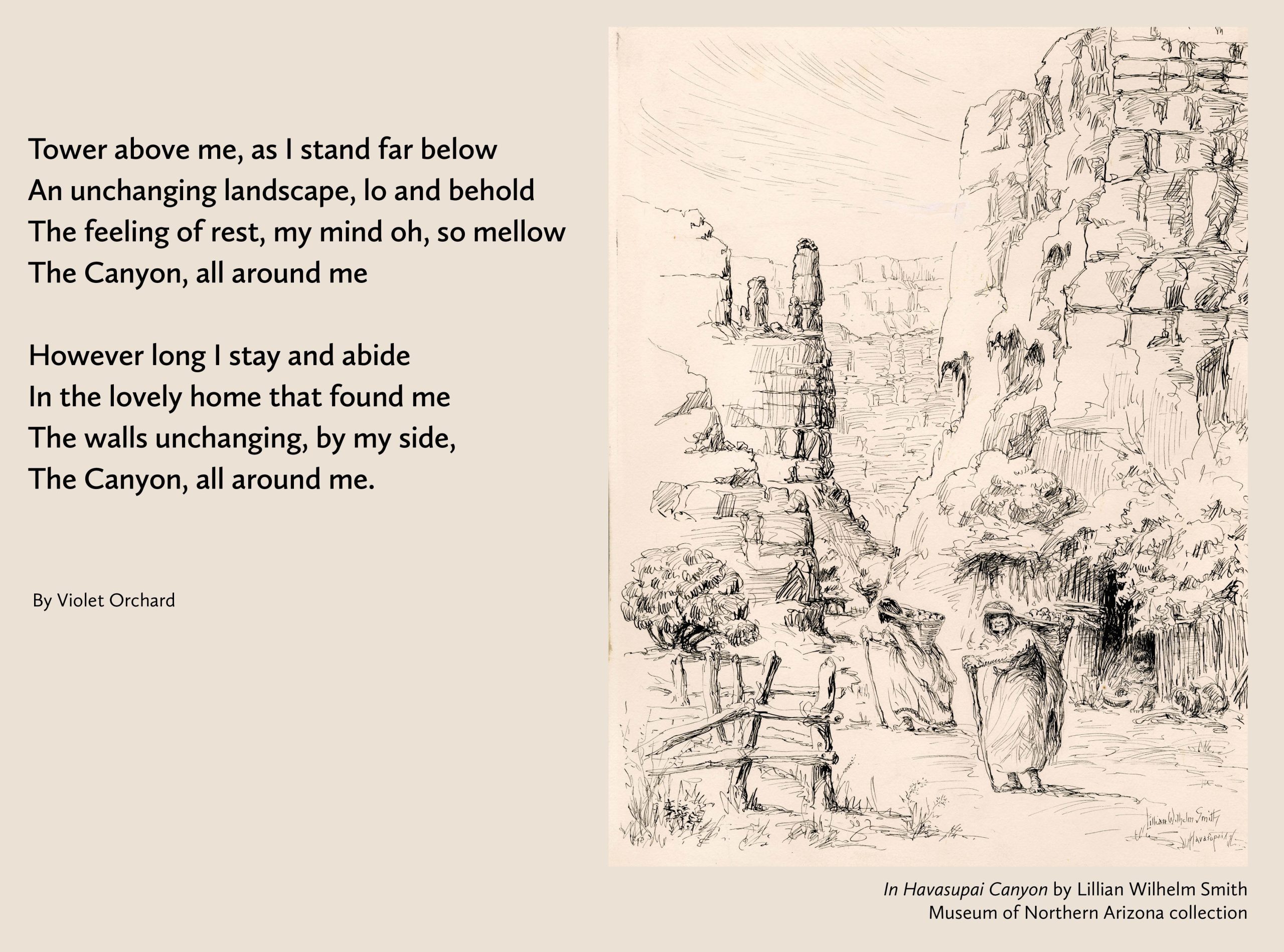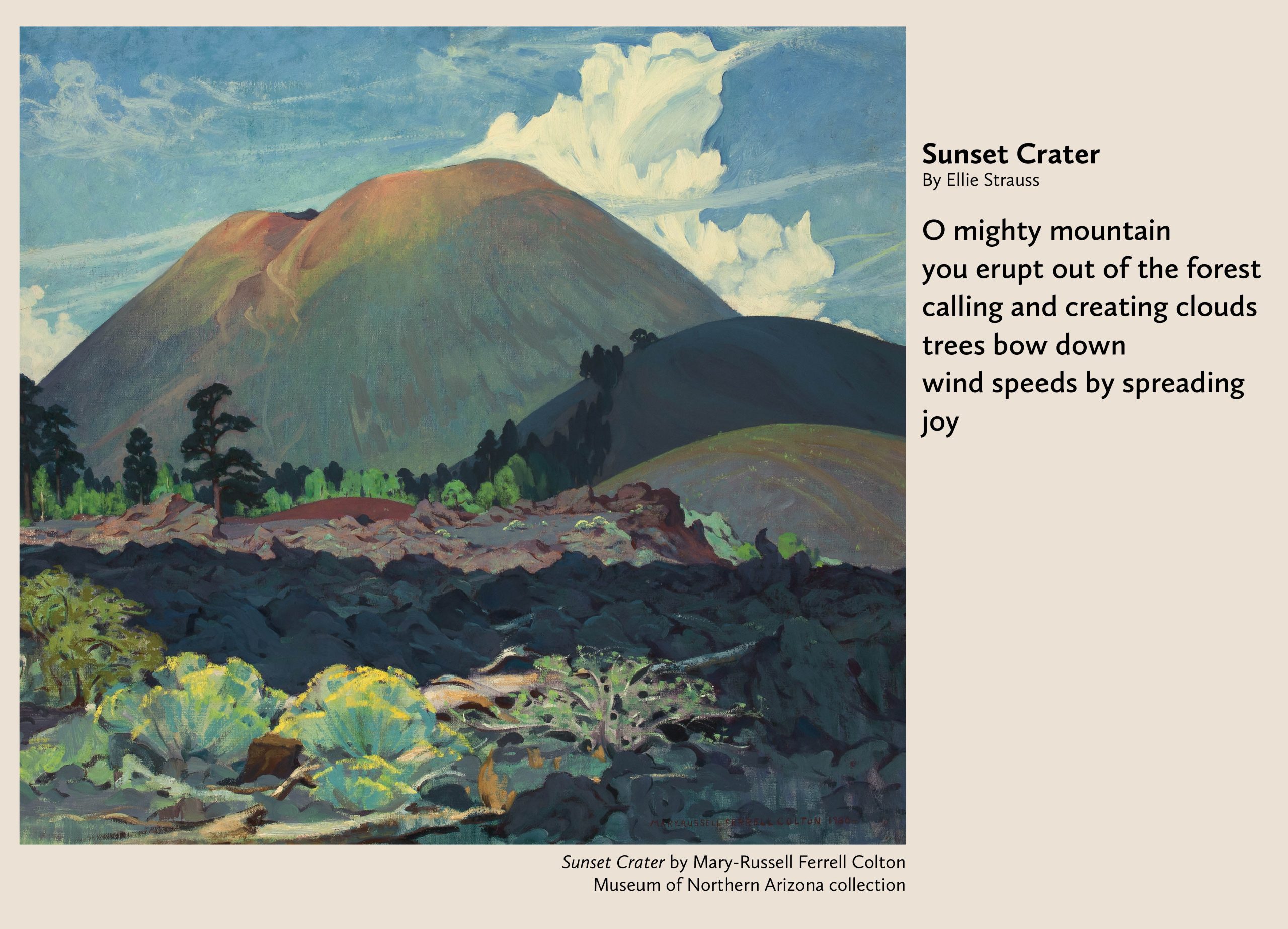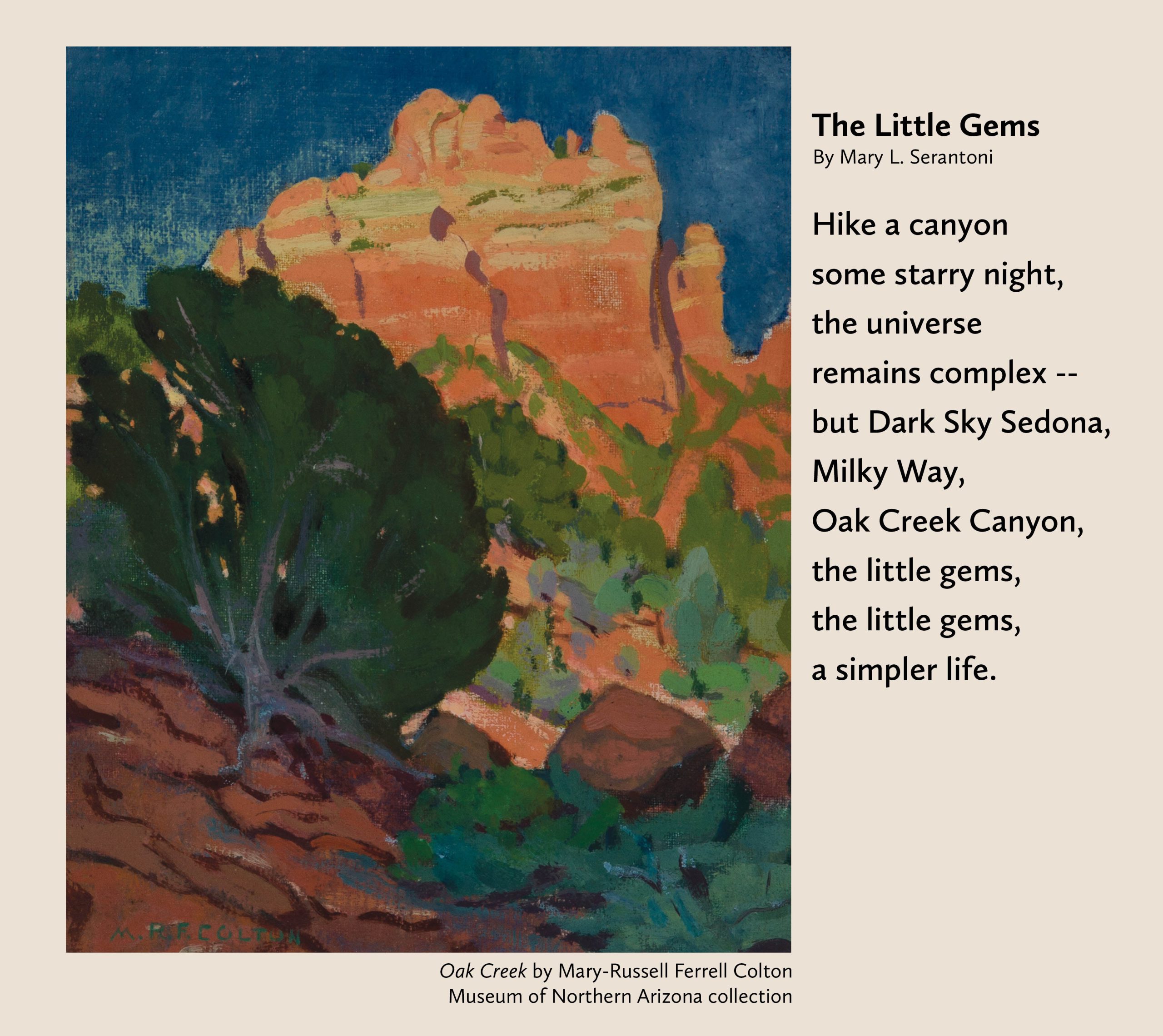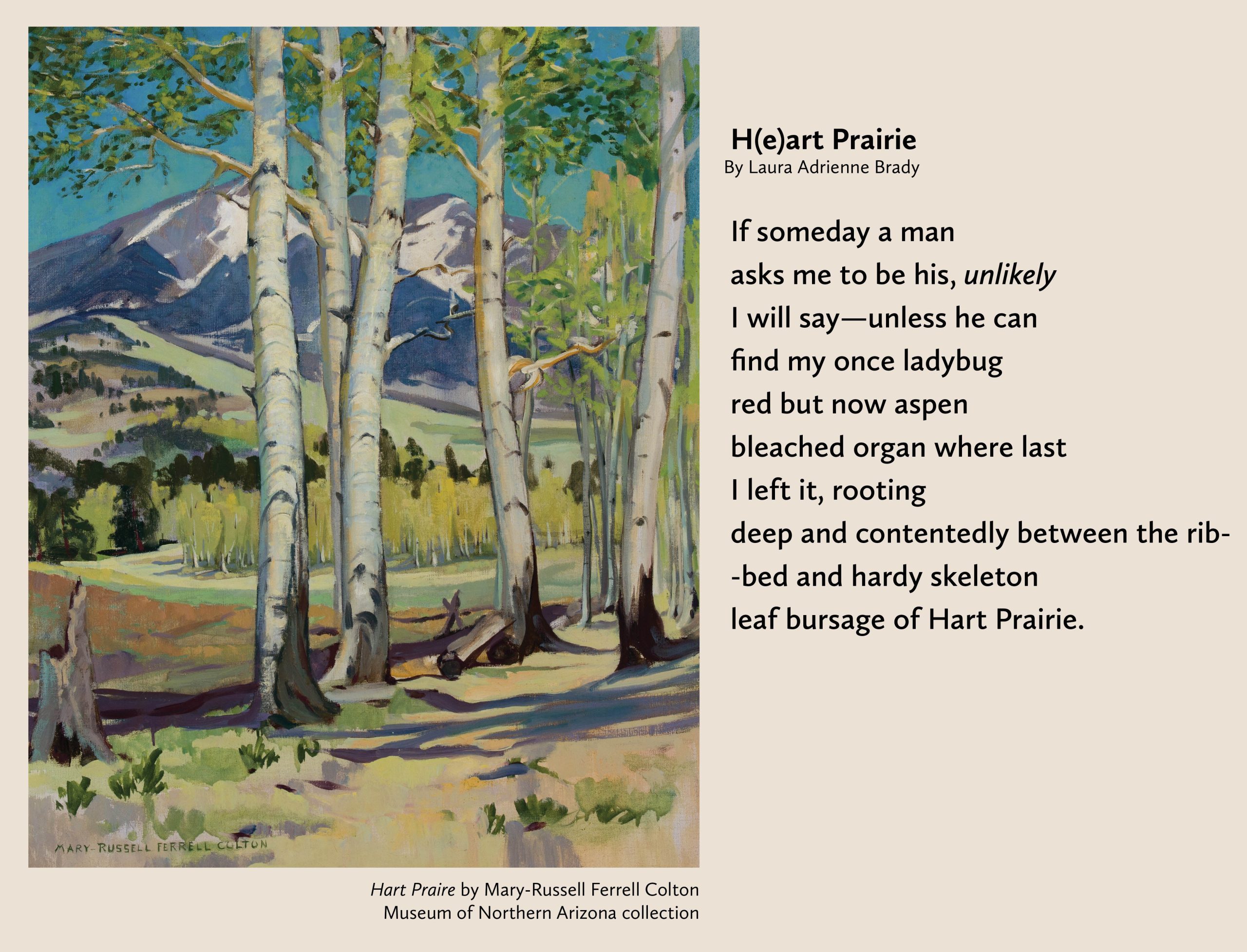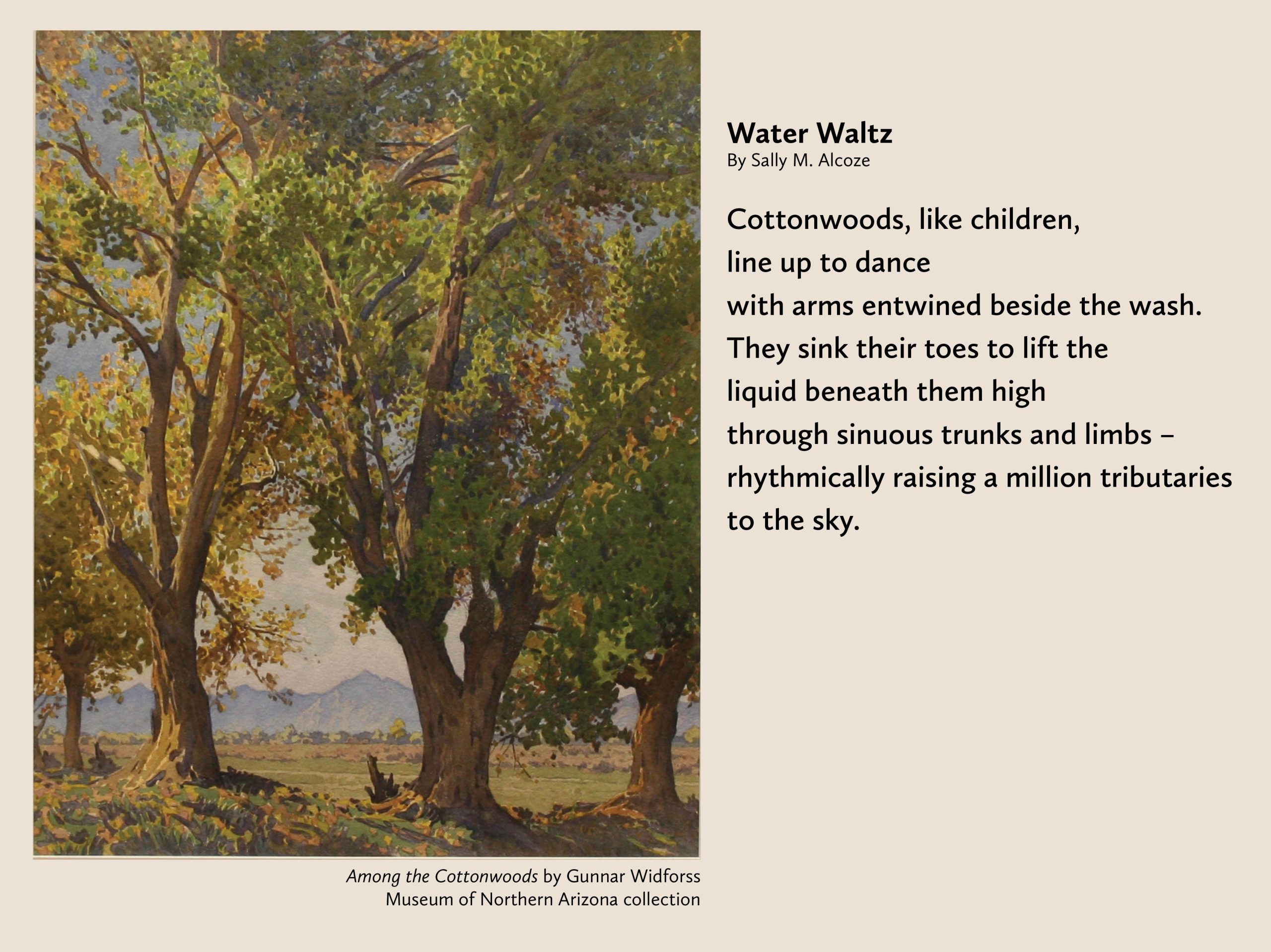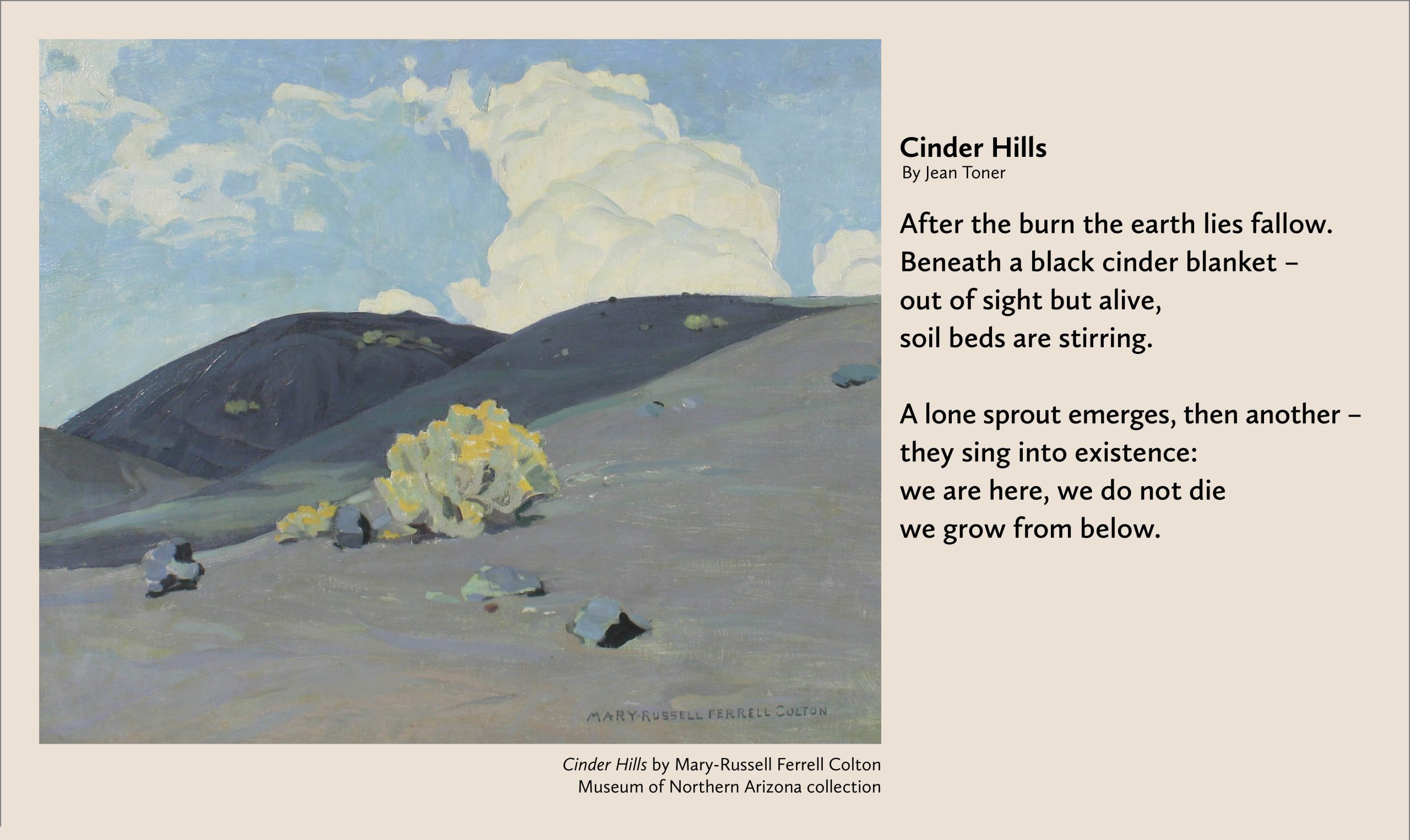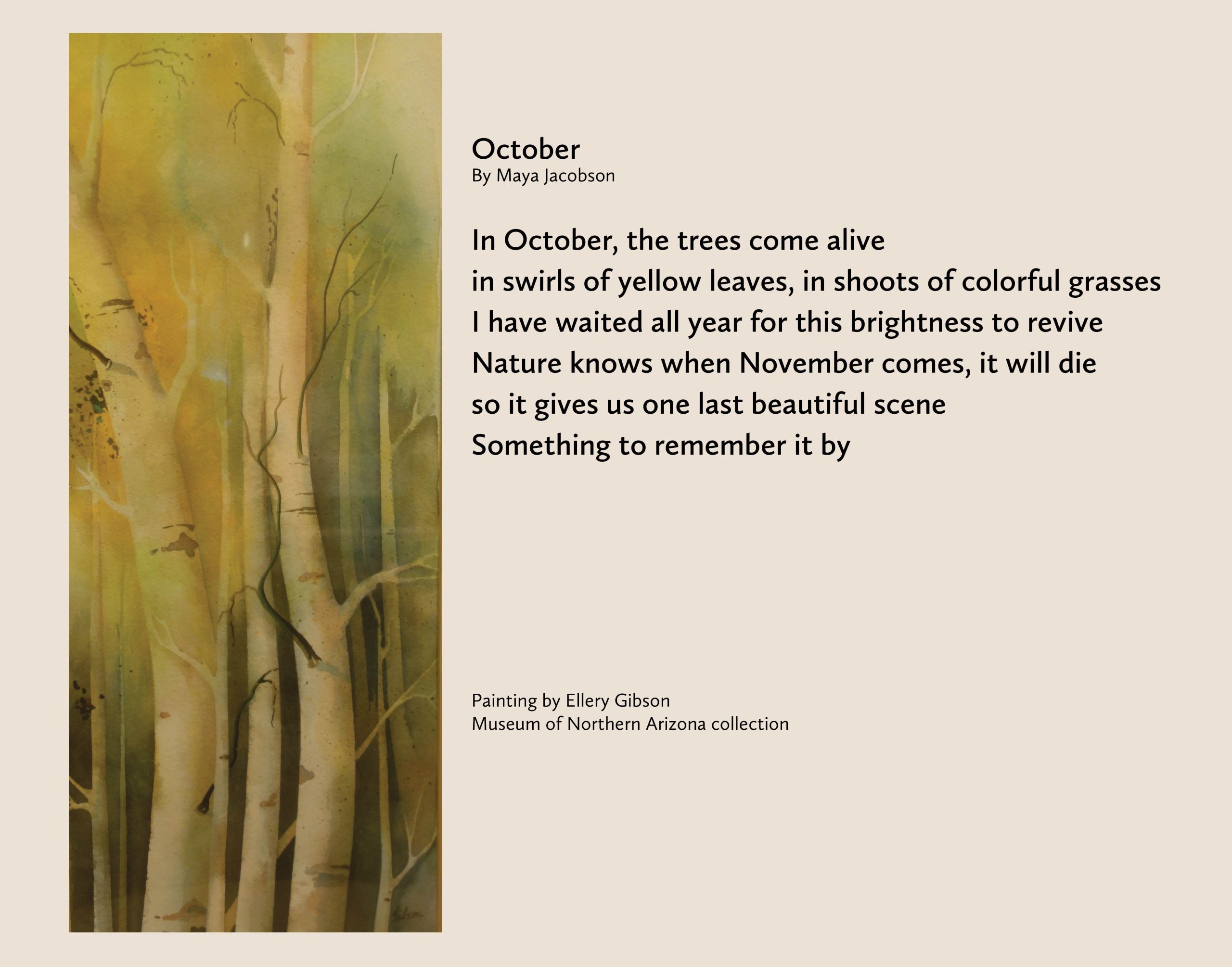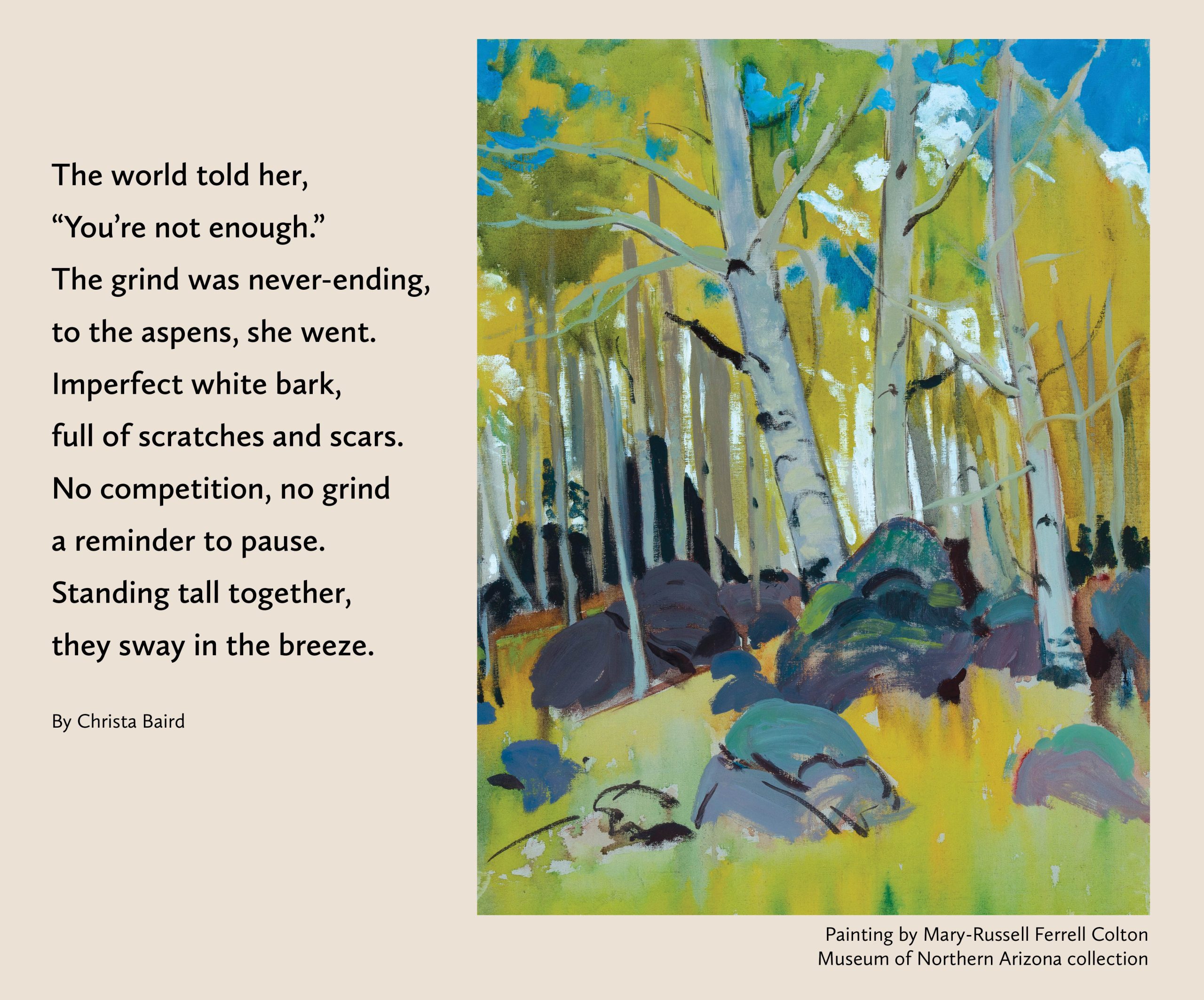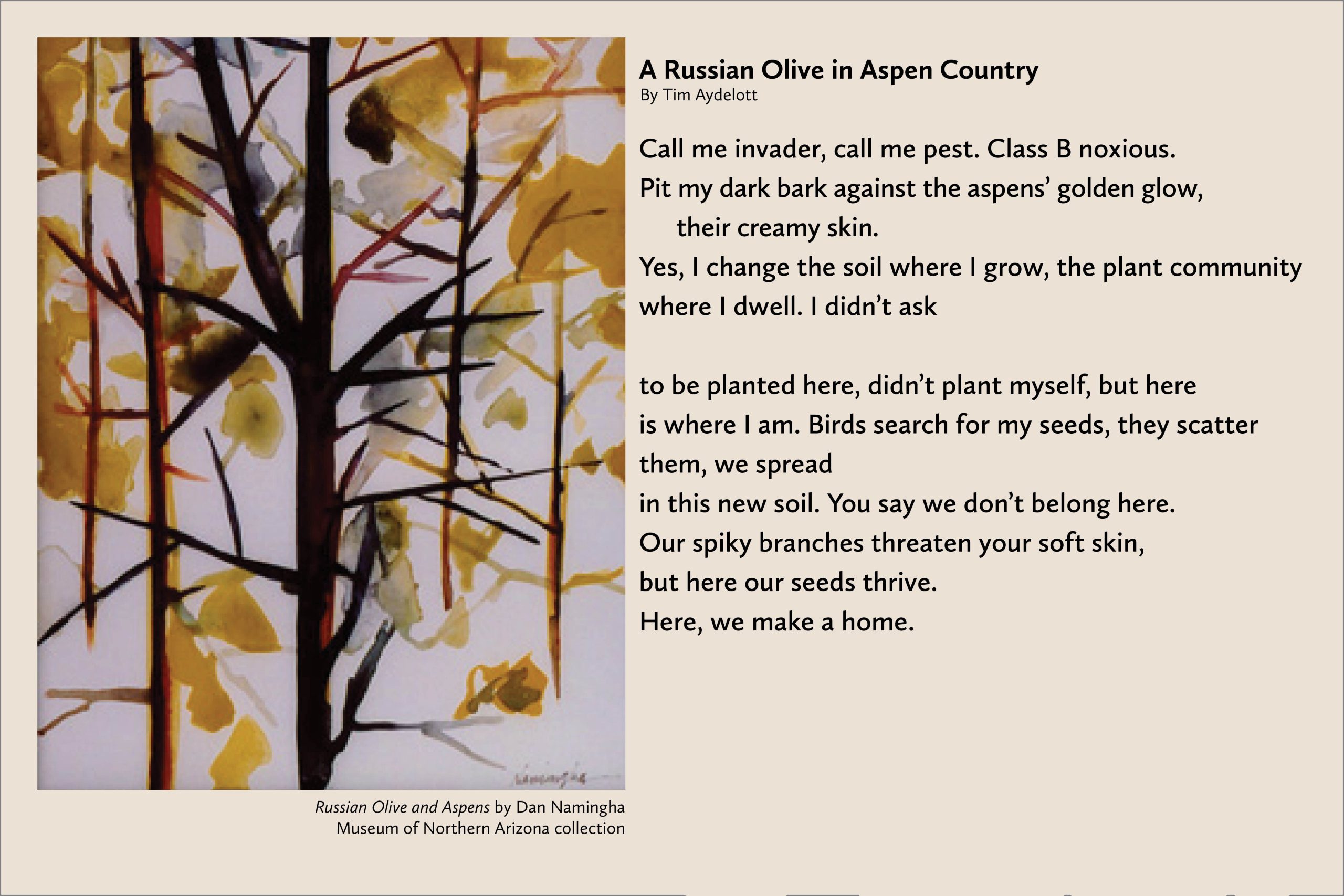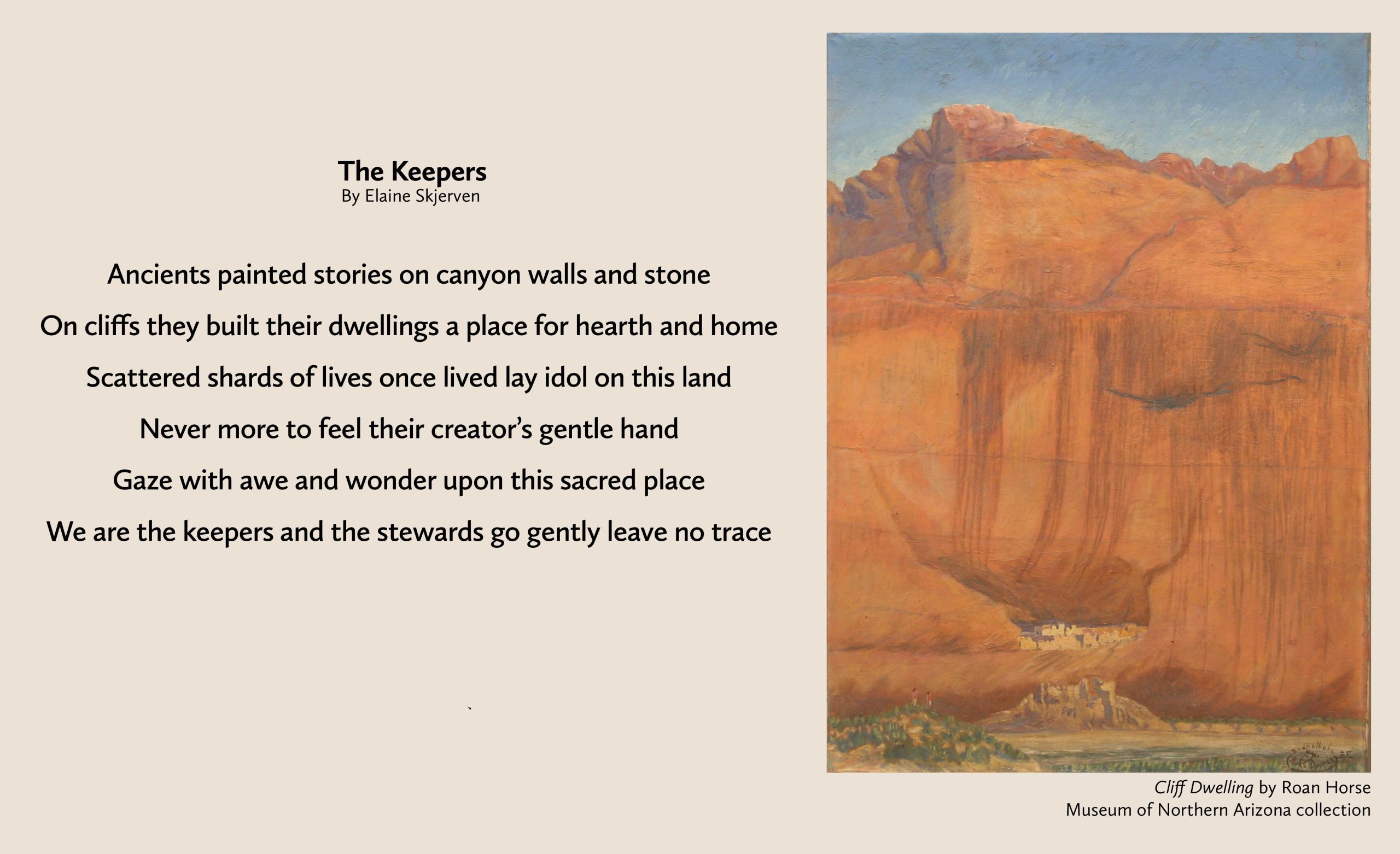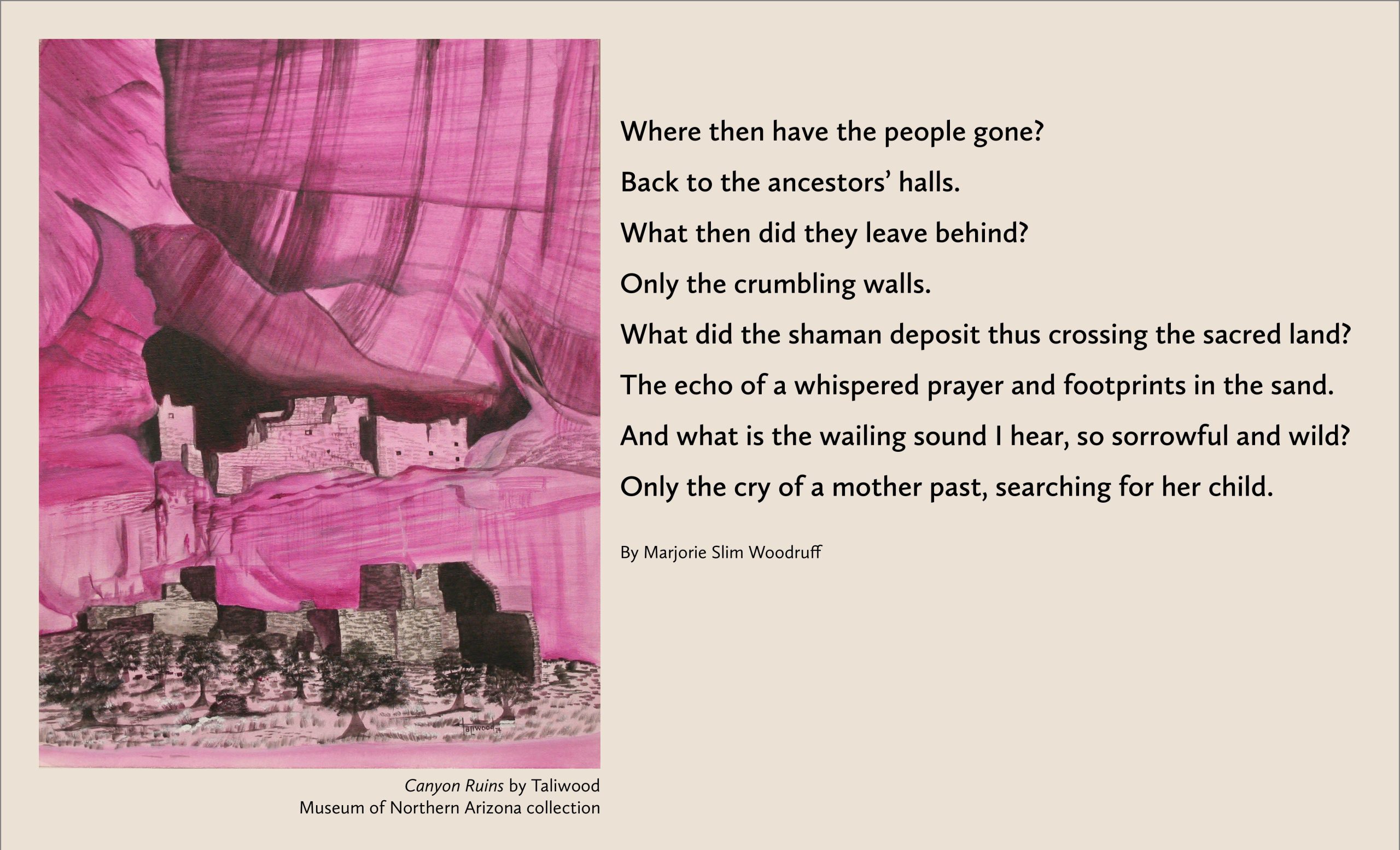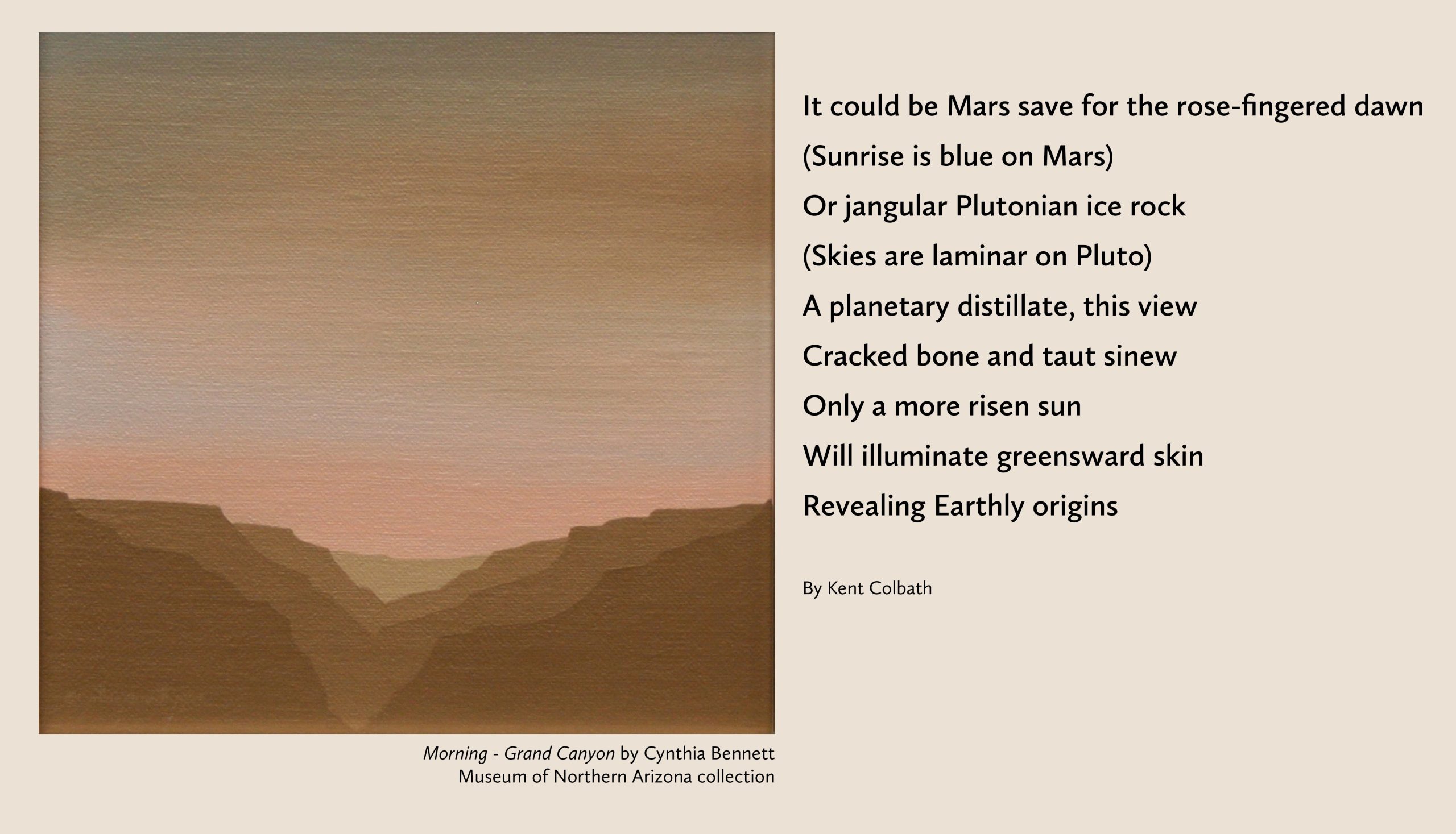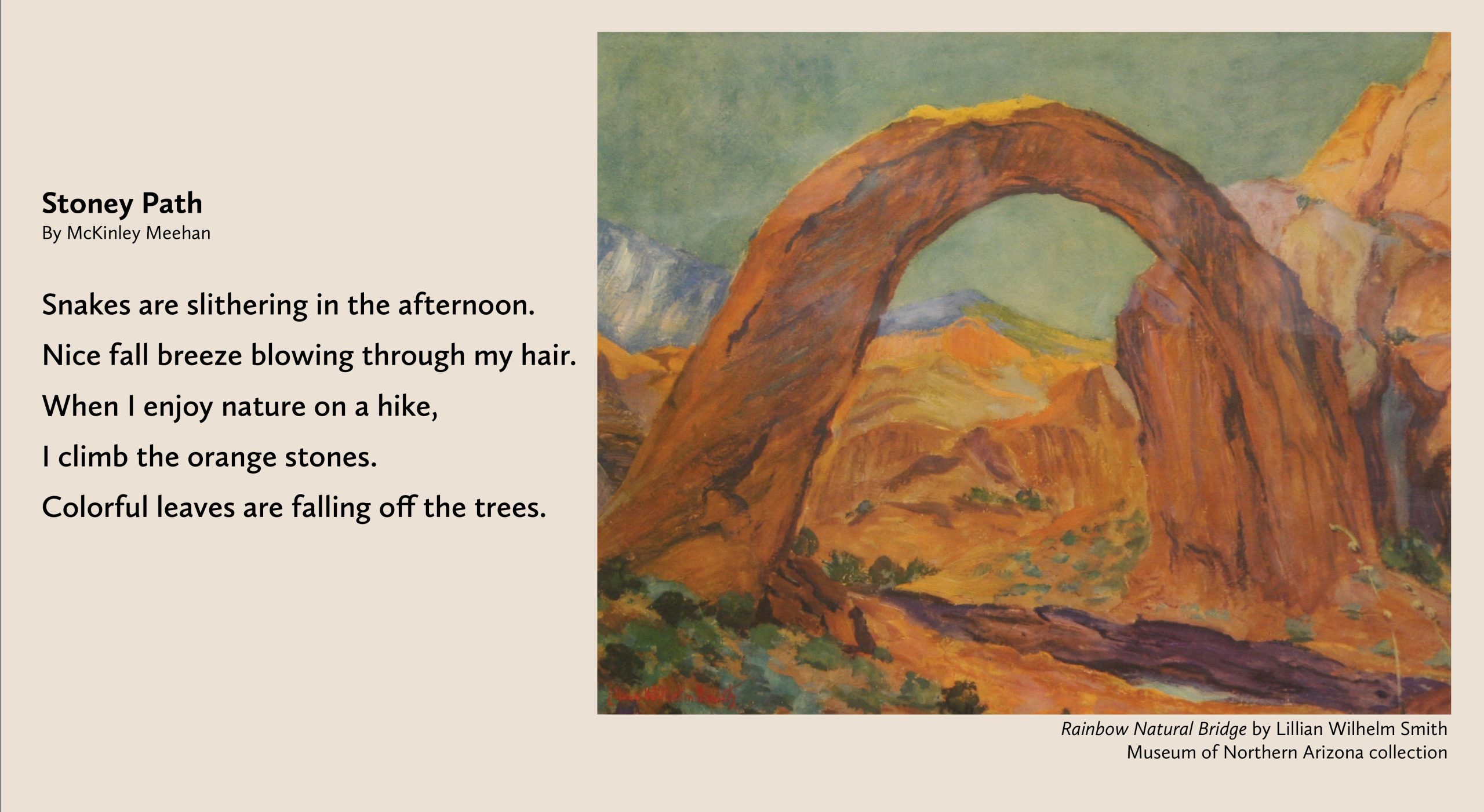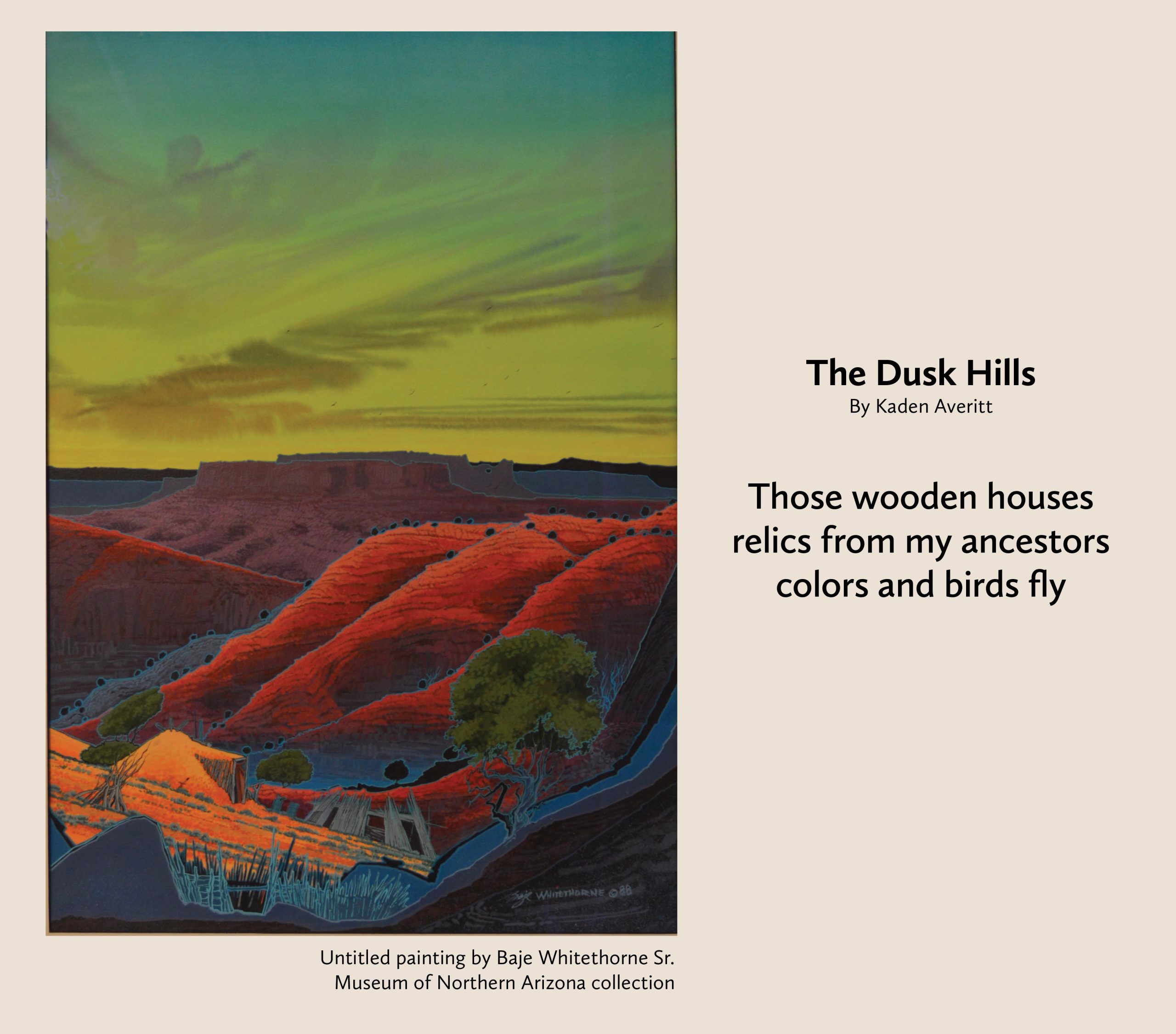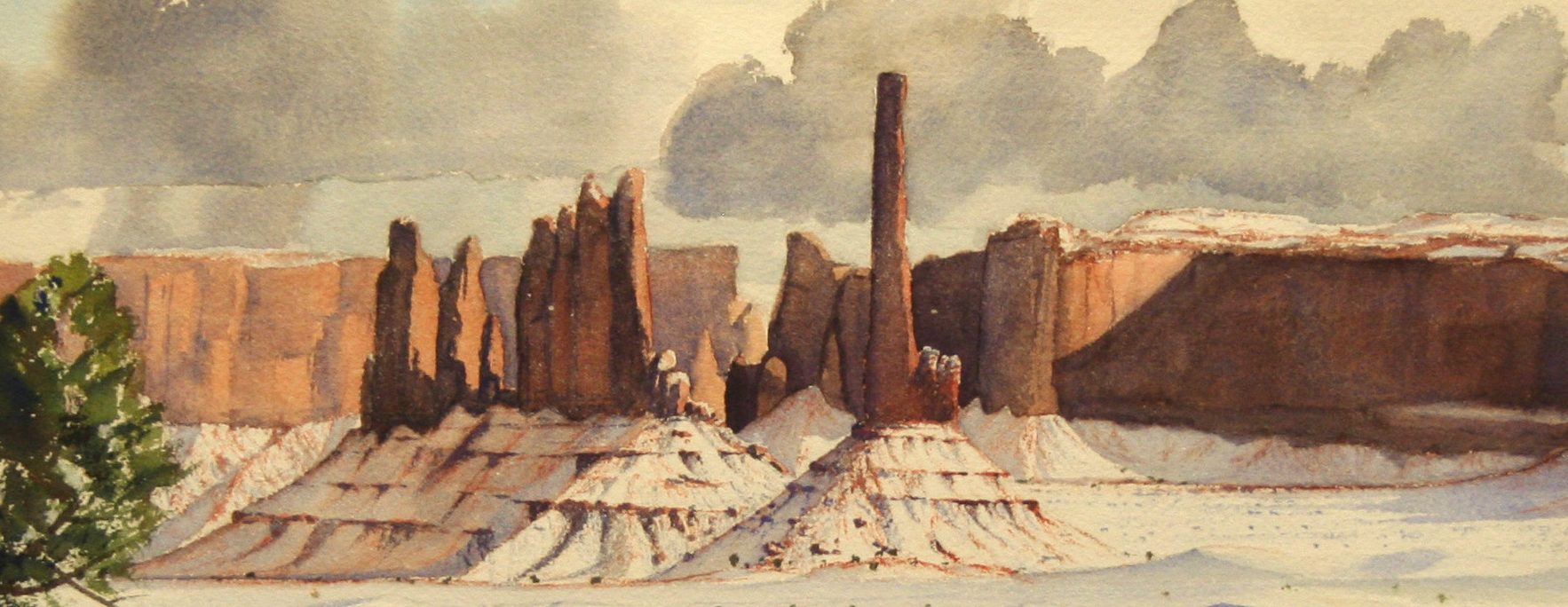
Mapping our community with poetry
Installation May 18-26
 Mapping our place with poetry and art
Mapping our place with poetry and art
How do we understand where we are in a world that stretches far beyond our view? Maps provide the perspective we need to see beyond our own horizons or experiences. Nearly 50 years ago the Museum of Northern Arizona oversaw a massive project to create a geologic map of the Grand Canyon that helped geologists, river rafters, and canyon fans understand the layers of time revealed in the rock. A new exhibition shares the story of the Grand Canyon Dragon Map.
As we worked on that exhibition, we invited the community to help us create a different kind of map, one that reflects the connection between people and place. We received more than 100 submissions to our call for poetry and selected 28 to accompany art from the Museum collection. These selected poems can be viewed in an outdoor installation at the museum during the ARTx festival, creating another kind of map you can stroll through. The poems and art will also be placed on the Mountain Line buses and at locations throughout the community. You might see them at either Flagstaff Library, Elden Pueblo, the Flagstaff Mall, the Mead Hall, AZ Handmade Gallery, Picture Canyon trailhead, Buffalo Park, and the Visitor Center. More poems will keep popping up!
Poetry has a powerful capacity to evoke particular places, to inform us of their meanings, and to ground us in them regardless of whether we know them or not. While the visual artist describes a place with color and lines, the poet plays with a palette of words. The goals of Poetry Maps are to bring poetry and art into daily life, to connect people to places on the Colorado Plateau and celebrate the personal/universal experiences of this area.
“Poems of place contain the psychological and geographic maps we make of the worlds we know, think we know, and those we remember,” wrote poet KC Trommer.
Owen Sheers in his essay “Poetry and Place: some personal reflections” suggests that: “A poem, like landscape, situates us by translating the abstract world of thought and feeling into a physical language.”
Or, as Wendell Berry put it “If you don’t know where you are, you don’t know who you are.”
Let us, together, map the Colorado Plateau through words, memories, and musings.
Teachers
Consider using the Poetry Maps as a class project to inspire your class to write poems about place. To arrange a class visit to the Poetry Maps exhibition, or to get copies of the Poetry Maps images and poems to use in the classroom, contact Education Manager Sacha Siskonen at ssiskonen@musnaz.org
Write your own poem
We hope this project inspires you to write some poetry or musings of your own. Try one of the following writing prompts. If you are looking for feedback as you work on crafting your poem, consider joining the MNA Writer’s Group, which meets on Zoom on alternating Wednesdays. Contact khutchison@musnaz.org
Directions: Give someone directions to or through the place. How will they recognize the destination? What should they watch out for? What are the most prominent features?
En Plein: Painters often go to a place to paint en plein air. Writers also find inspiration by visiting a location. Go to the place pictured, or one like it, and experience it. Take a journal to make notes. What do you notice? What do you think? What do you know? How is being in the place different than looking at the painting?
Memory: Write down any memories you have of the place or that it reminds you of. Use specific details.
Natural forces: How was this place formed? What were the forces that shaped it? What does it tell you about the past? When you think about all that this place has been through, how do you feel?
Where I’m From: Listen to George Ella Lyon read Where I’m From. Using the starting phrase “I am from…” create a series of sentences that tap into the concrete details of your life and experience.
Imagination: Things you imagine or wish related to a place. What would you do if you could go there? Use these lists to inform your poem.
Senses: List sensory details and feelings about the chosen place. If you were there, what would you see, smell, hear, feel, and taste?
20 Questions: Looking at the image, quickly list questions about it. When you get beyond the obvious questions, you may find a poem, if not in the questions themselves, then by trying to answer them.
Home Planet: Imagine you are from another planet, stuck on earth and longing for home. Or that you are on another planet, remembering Earth.
Tourist: Imagine someone visiting from out-of-town who is complaining about this place. Respond to them with three things you think are wonderous about the place and some advice for the visitor.
Signs of the Times: How has a place you are familiar with changed over the past 10 years?
The Artist: Have an imaginary conversation with the artist. What do you imagine about the artist from the painting? What were they thinking or feeling? What would you say to them or ask? What would they say to you?

